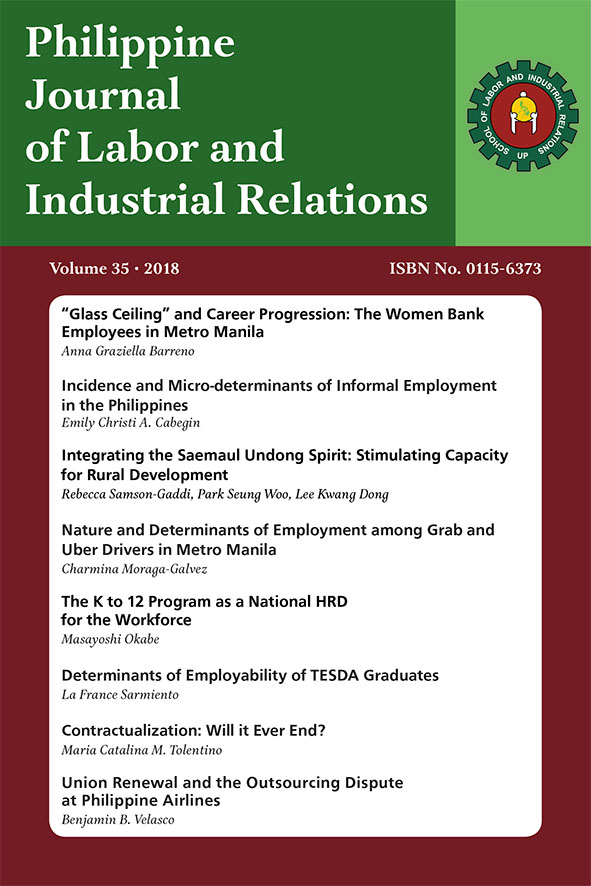Incidence and Micro-determinants of Informal Employment in the Philippines
Abstract
This paper determines the extent and the micro-determinants of informal employment in the Philippine labor market. Using merged data of the 2008 Informal Sector Survey and the Labor Force Survey, the study identifies the informality of employment in the formal sector, the informal sector and private households. The findings reveal that 83 percent of the Filipino workers were informally employed, reflecting severe constraints to decent work. While virtually all the workers in the informal sector and private households were consigned to informal employment, the data also bears out the extensive informalization in the formal sector. Informal employment accounted for one-third of workers in the government and private corporations and 70 percent of other formal sector private establishments. Binary logistic regression model is employed to examine the micro determinants of the informality of employment across major regional groupings. High probabilities of informal employment persisted throughout the workers’ working life cycle indicating that informal employment was not a transitory but a more permanent phenomenon. While informality rates were highest among the least educated, a college education did not guarantee success in obtaining a formal job. The least developed regions, particularly the Autonomous Region of Muslim Mindanao, experienced the highest rates of informal employment.
Published
2021-02-25
How to Cite
CABEGIN, Emily Christi A..
Incidence and Micro-determinants of Informal Employment in the Philippines.
Philippine Journal of Labor and Industrial Relations, [S.l.], v. 35, feb. 2021.
ISSN 0115-6373. Available at: <https://journals.upd.edu.ph/index.php/pjlir/article/view/7445>. Date accessed: 03 sep. 2025.
Section
Articles


